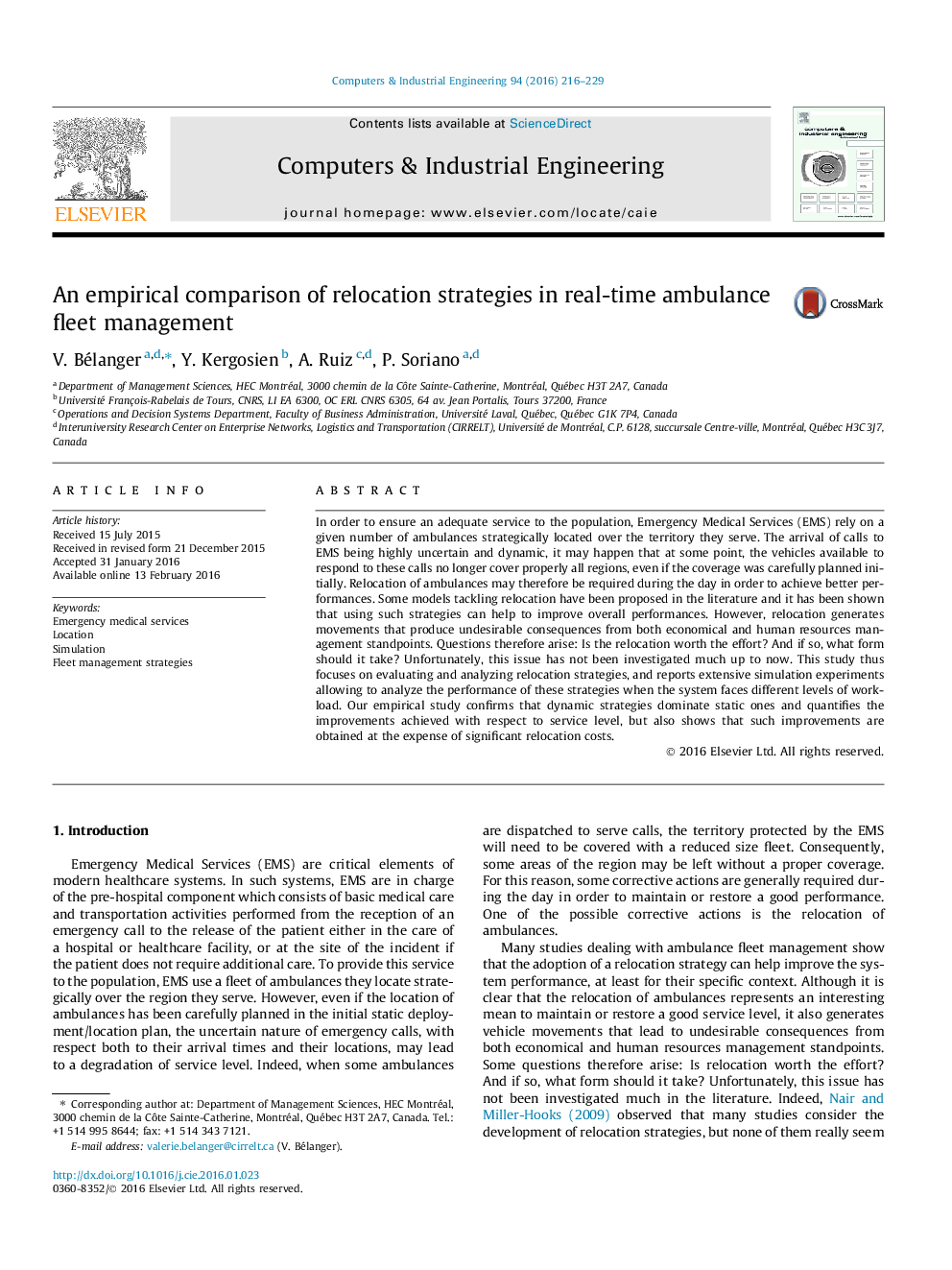| Article ID | Journal | Published Year | Pages | File Type |
|---|---|---|---|---|
| 1133281 | Computers & Industrial Engineering | 2016 | 14 Pages |
•We define four fleet management strategies and model them using a common framework.•We report extensive simulation experiments to analyze the proposed strategies.•Our empirical study confirms that dynamic strategies dominate static ones.•Improvements are obtained at the expense of significant relocations costs.
In order to ensure an adequate service to the population, Emergency Medical Services (EMS) rely on a given number of ambulances strategically located over the territory they serve. The arrival of calls to EMS being highly uncertain and dynamic, it may happen that at some point, the vehicles available to respond to these calls no longer cover properly all regions, even if the coverage was carefully planned initially. Relocation of ambulances may therefore be required during the day in order to achieve better performances. Some models tackling relocation have been proposed in the literature and it has been shown that using such strategies can help to improve overall performances. However, relocation generates movements that produce undesirable consequences from both economical and human resources management standpoints. Questions therefore arise: Is the relocation worth the effort? And if so, what form should it take? Unfortunately, this issue has not been investigated much up to now. This study thus focuses on evaluating and analyzing relocation strategies, and reports extensive simulation experiments allowing to analyze the performance of these strategies when the system faces different levels of workload. Our empirical study confirms that dynamic strategies dominate static ones and quantifies the improvements achieved with respect to service level, but also shows that such improvements are obtained at the expense of significant relocation costs.
